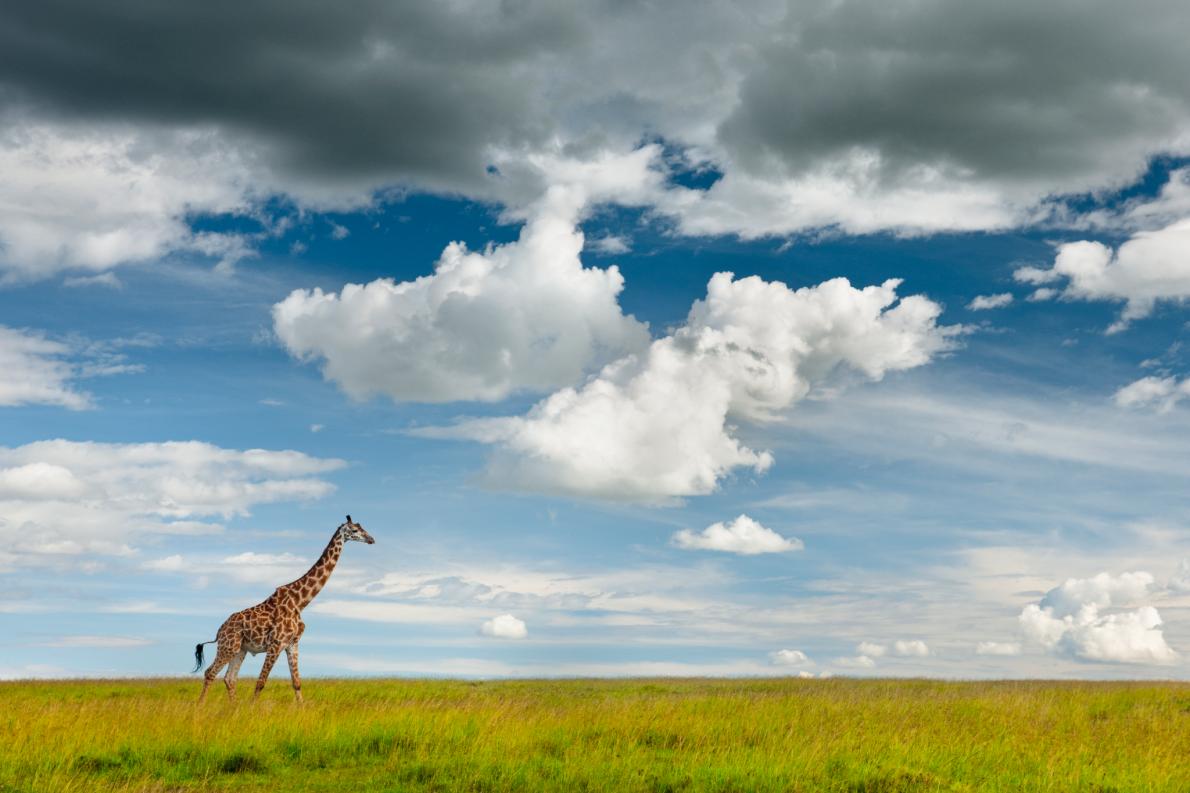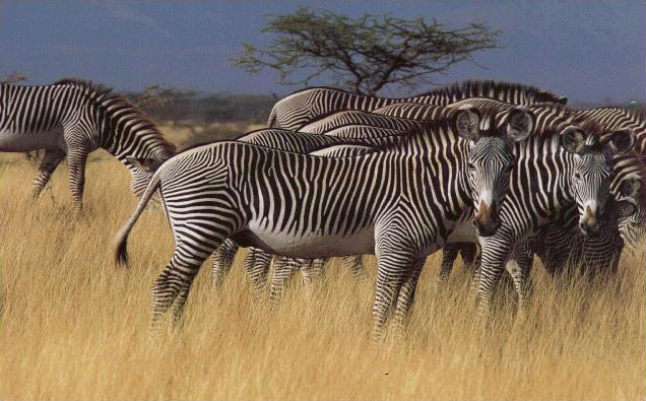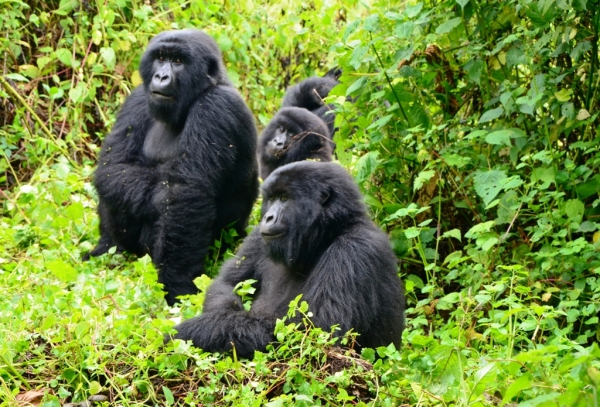Giraffes, Zebras Face Surprising Top Threat: Hunting
Demand for meat is driving some of the world’s iconic herbivores toward extinction, new study finds.
It’s no secret that elephants and rhinoceroses are in trouble, poached for body parts and meat that are sold worldwide. But a new study published today in the online journal Science Advances finds that other large plant-eaters, including zebras and gorillas, are in the same sinking boat.
Hunting these animals for their meat—either for subsistence or for sale—is a major threat, along with poaching, to the world’s largest herbivores, the researchers report.
Habitat loss from human activities like agriculture and construction, and competition from livestock, round out the top four threats facing these animals.
In addition to their appeal for safari tourists and hunters, herbivores play crucial roles in their respective environments, according to the study.
As browsers, they reduce the amount of vegetation that could spark and fuel wildfires. They can disperse large seeds in their dung over greater distances than their smaller cousins, helping to vary a landscape’s trees and plants. And they themselves provide food for carnivores, such as lions.
Ecologist and lead author of the study William Ripple, at Oregon State University in Corvallis, discusses how our appetite for these animals is destroying some of the most spectacular symbols of Earth’s wildest places.
It’s not exactly news that large herbivores are in trouble. How does this study advance our knowledge?
It’s the first analysis of all 74 [herbivore species] that are greater than 100 kilograms (220 pounds) in body weight. This is a follow-up to our analysis of the entire group of carnivores that we published last year.
They’re just as endangered as the large carnivores are. About 60 percent of these large herbivores are threatened with extinction.
What were some of the surprises?
We thought the large carnivores, as a group, would be more threatened than the large herbivores just because the large carnivores are more persecuted. But that was not the case.
We also expected that habitat loss would be the dominant threat, but in the end we found that hunting for meat and body parts was probably more significant than habitat loss itself.
Do people hunt these animals to feed themselves?
Hunting for meat has two types: One is subsistence, but another major one is for consumption by people in cities. Bush meat is getting to be quite a popular food choice by people who have more income and live in cities and towns.
With the subsistence people, their numbers are increasing. At the same time, wildlife populations are going down, so we have a perfect storm here, with fewer wildlife numbers and [higher] demand.
Is bush meat gaining popularity in-country or as an export?
It’s international. You’ll find bush meat or wild meat is being sold in many different countries, and it’s exported from developing countries. Some is going to Southeast Asia, and some is even going to Great Britain and other developed countries.
People often hear about poaching of elephants and rhinoceroses for their ivory and horns. Tell us about the less well-known animals that are taken.
Gorillas are taken for body parts [head, hands, and feet]. Giraffes are killed for both their meat and their hides—they’re not threatened, but they’re getting closer because of the hunting for them.
Then cervids, which are deer—they’re typically coveted for their antlers. Tapirs are taken for their feet and hides. Equids, which are the horses, [are also taken] for their feet and hides.
With hippos, there’s ivory in the teeth. Ivory is really, at this point, in high demand.
What gives you hope?
I’m cautiously optimistic for a few reasons. One is, generally, people love these large animals, and they don’t want to see them wiped out. So I feel that by us publishing this study, and the media picking up on it, the information can get to a broader world community.
I think educating the public and policy makers is important. For example, I live in Oregon and one of our representatives just introduced a bill to the U.S. House of Representatives to sanction countries that import elephant tusk and rhino horn. So things can happen, with greater awareness.
By Jane J. Lee, National Geographic



